SteamWorld Heist is a side-scrolling tactical shooter about Piper Faraday, a heroic robot pirate who captains a band of eclectic space rogues. She guides her crew in a distant future where Earth has been shattered by a massive implosion. Those who survived the destruction now live in the vacuum of space, making homes in spacebases and on the few surviving shards orbiting Earth’s still-burning core.
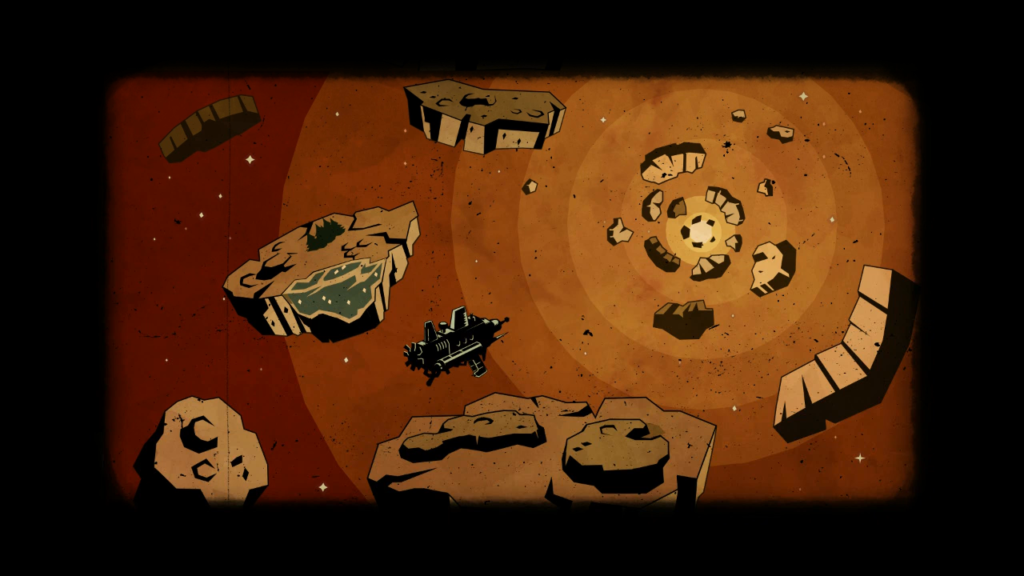
Among these survivors are the Steambots, robots who rely on water to power their bodies. Moisture farmers gather this precious resource to sustain the Steambots, but they are preyed upon by cannibalistic Scrapper bandits and taxed by the militaristic Dieselbot Royalists. Piper and her crew fight back against these threats, reclaiming water in daring heists on enemy spaceships and bases. It is during one such heist that Piper’s crew accidentally embroils themselves in a much more sinister conflict against SteamWorld’s hidden, recurring nemesis, threatening the future of all the robots that live around the shattered remains of Earth.
SteamWorld Heist is made up of short raiding missions where a small squad of Piper’s crew infiltrate a randomly-generated level and work to complete an objective. These objectives range from collecting an entire level’s worth of loot, to reaching a specified location, or simply surviving against multiple enemy waves. Despite these variations, most missions feel similar as the priorities never change: Shoot everything that moves, keep the raiding party alive, and pick up as much loot as possible.
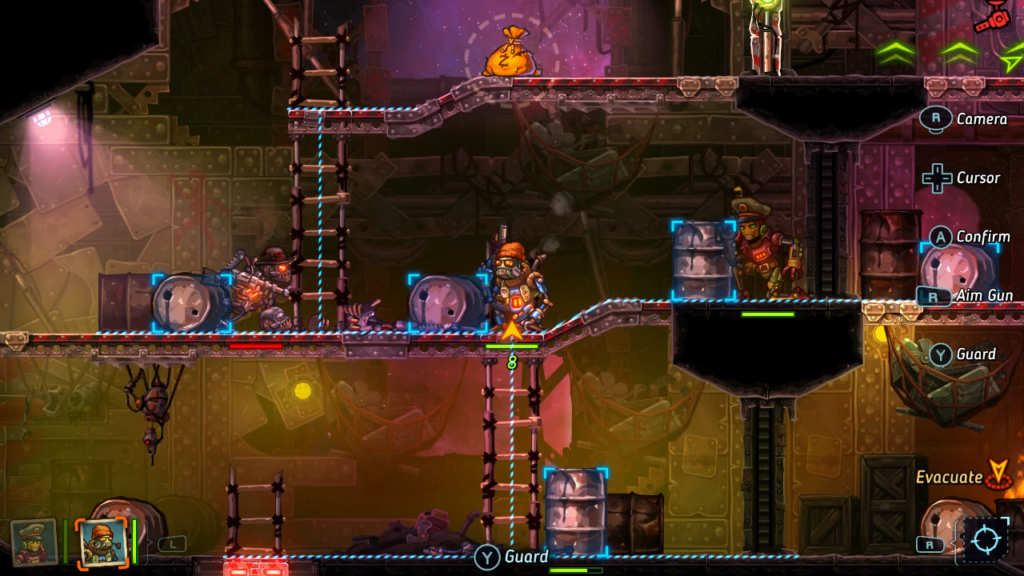
Missions proceed as turn-based, side-scrolling tactical battles. Piper’s crew and the defending squad take turns moving, attacking with a variety of guns, and using a bevy of useful and unexpected skills to seize the advantage. Under most conditions, individual bots can move and act once per turn. Ideally, a crewmate should be moved into a tactically advantageous position that still leaves them defended after they fire their weapon or use an ability. Levels are strewn with boxes, barriers, and waist-high walls that bots can use for cover during the enemy team’s turn.
What makes SteamWorld Heist stand out from other turn-based strategy videogames are its fundamental shooting mechanics. Guns are aimed manually, so I have to use my own eyesight to fire projectiles where I want them to go. The further a bot is from their target, the more difficult it becomes to manually aim a shot into them. Where a bullet hits on a target matters as well. Hitting enemies in the legs prevents them from moving during their next turn. Striking one in the head may deal a critical hit, adding additional damage. The system is so precise I can even shoot the hats off enemy heads and claim them for Piper’s crew. Collecting every hat becomes one of Heist’s most involved long-term goals for completion-chasers.
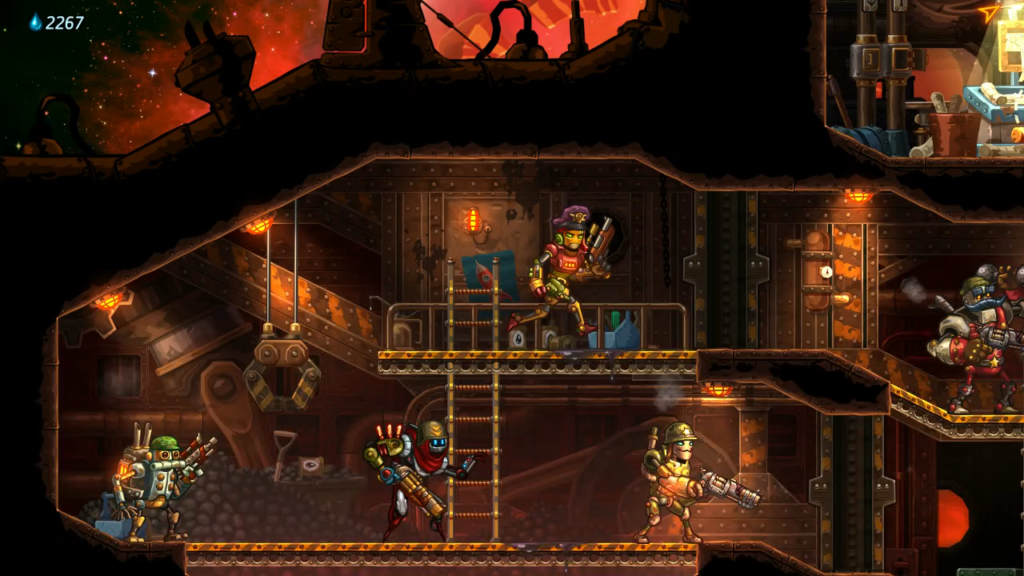
At Heist’s outset, I am able to deploy Piper and her sole surviving crewmate, Gabriel “Seabrass” Stubb. Piper can heal her crewmates and increase the firepower of bots that stand beside her. Seabrass has more hit points than Piper and grows more powerful when he takes damage, incentivizing his presence on the frontline. Later bots that join the crew include Sally Bolt, a displaced farmgirl-turned-bounty hunter who can take extra turns when she deals a killing blow, and Grahame “Payroll” Phroggi, a bot with a monowheel instead of legs who deals more damage when attacking enemies from behind.
I can outfit Piper’s crew with an arsenal that has familiar pros and cons. Handguns are basic, reliable but boring. Shotguns deal more damage, but are inaccurate at medium and long ranges. Explosives come in both grenade and rocket launcher form; grenades can bounce to their targets while rockets travel in a straight line, and both can damage friendly bots if not fired with care.
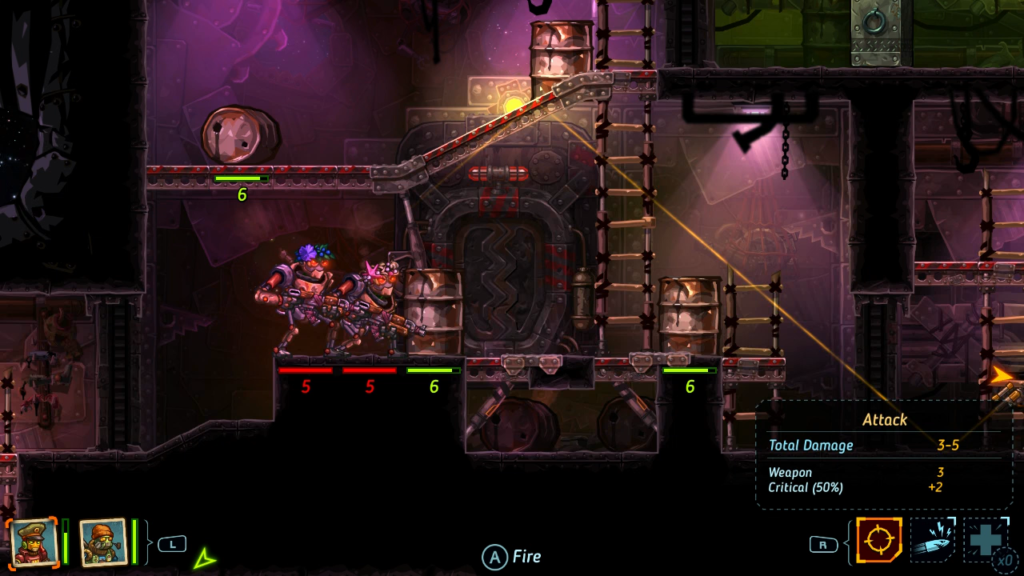
Sharpshooter-class guns, usable by Piper and former chimney sweeping bot Valentine Butterbolt, are powerful weapons equipped with laser sights which remove the need to rely on estimated line-of-sight to hit an enemy. More importantly, Sharpshooters can ricochet bullets off floors, walls, and ceilings, letting them hit enemies from complete safety on the other side of the room. To offset this powerful ability, Sharpshooters introduce a sway to the bot’s arm whose arc grows the further away they are aiming. They may be able to ricochet a bullet off a floor and around a corner into an enemy’s back, but success requires a perfectly timed shot.
Obtaining weapons and the other gear that Piper’s crew uses on their raids requires equal parts luck and effort. Scattered across every mission are swag bags. If I direct a bot to end their turn on a swag bag, they will claim it and can claim its contents upon the mission’s completion. Swag bags may contain new weapons and gear like life-restoring repair kits and protective armor. What appears is random, and rarely is it an improvement on what a bot is already using. Most often swag bags contain water, which can be exchanged at friendly shops for the weapons and tools the crew will actually use, though these weapons are usually not as powerful as what appears randomly in swag bags.
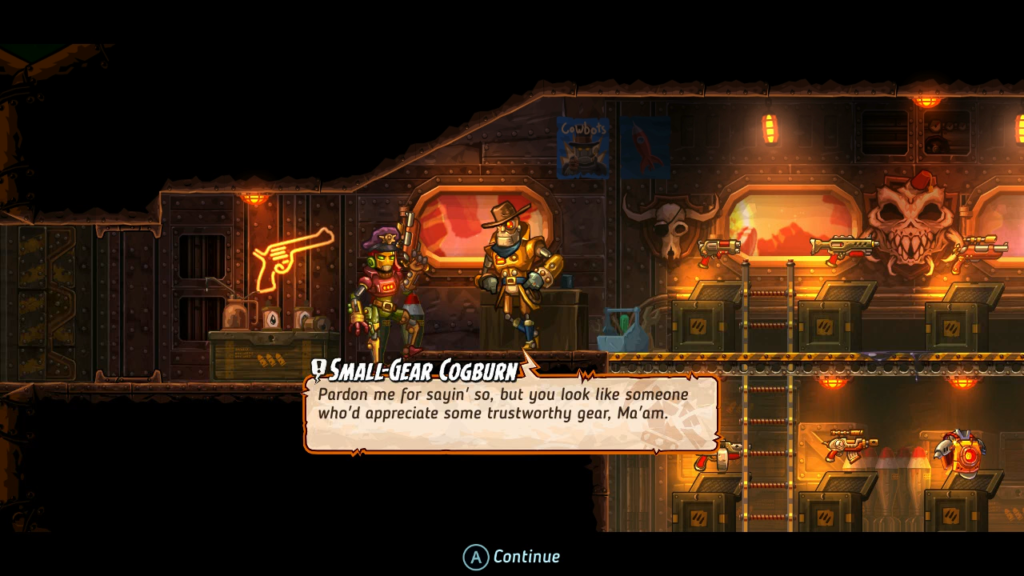
Most of the difficulty I encounter throughout SteamWorld Heist comes down to these and other randomized factors. There are multiple preset difficulty levels, ranging from a Casual “enjoy the story” to the Elite “ultimate challenge,” but every difficulty level can fall victim to randomized events that treat the crew poorly.
In one particularly frustrating example, the entire raiding party gets trapped in a room whose only exit is down a long ladder next to a door spawning endless numbers of new enemies. With no available cover, no clear line of fire, and no alternate route, I have no choice but to send each crewmember down the ladder to their doom, the mission failed solely because I sent Piper’s crew up the wrong ladder. Failing a mission penalizes a certain amount of water from Piper’s reserves—the amount depends on the difficulty level—but it’s not difficult to earn that water back by revisiting older missions with overleveled crew members. Since level layouts are random, they are made easier by favorable geography as often as they are made more difficult by an unfavorable one.
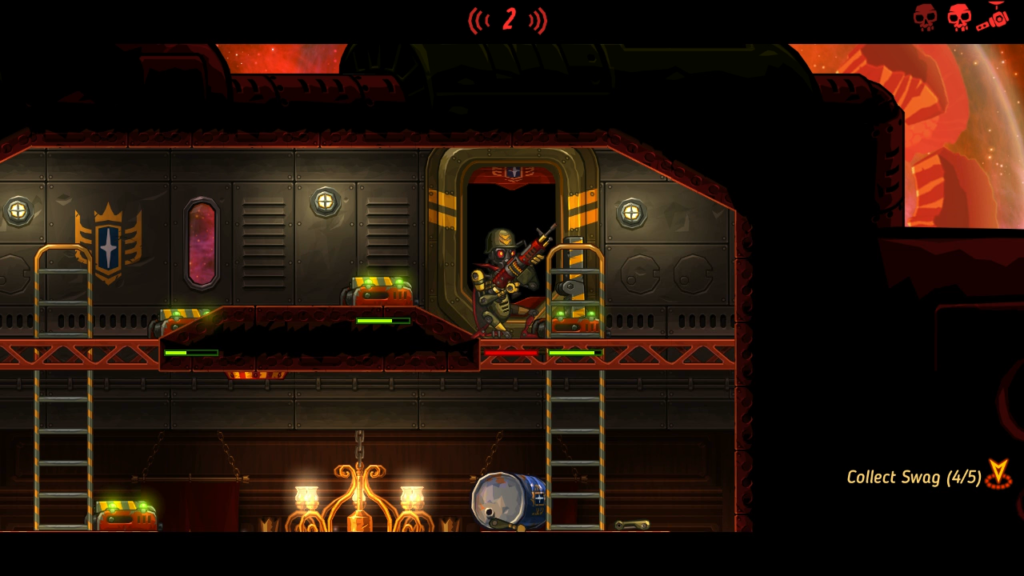
The most difficult missions are ones that include alarms. In these missions, reinforcements spawn endlessly once alarms are activated, forcing prioritization of aggressive and often dangerous moves towards a mission objective over my preferred slow and thoughtful strategy. These levels are made more difficult by how misleading the alarm interface can be; the countdown does not mark when the next wave of reinforcements arrive, but rather when the reinforcement waves get bigger and stronger. From a developer and a series that is normally friendly to players of all skill levels, the nonsensical way alarms are counted down can feel initially distressing.
In theory, some mission types should be made more or less difficult depending on which crewmembers I send on the job. Hardier, more mobile characters like Seabrass should excel at the fast and hectic missions, while slower and more powerful characters like Valentine should stand out in the slower, sneakier ones. The reality is there’s so little difference between each mission type that I end up fielding the exact same balanced team on almost every raid. Most of Piper’s crew spend the story cooling their robotic heels on the ship. I never use the majority of the recruitable crew members in SteamWorld Heist for the simple reason that I am never given a reason to use them. The variety gives me a lot of choices, but I am never pushed to make different choices.
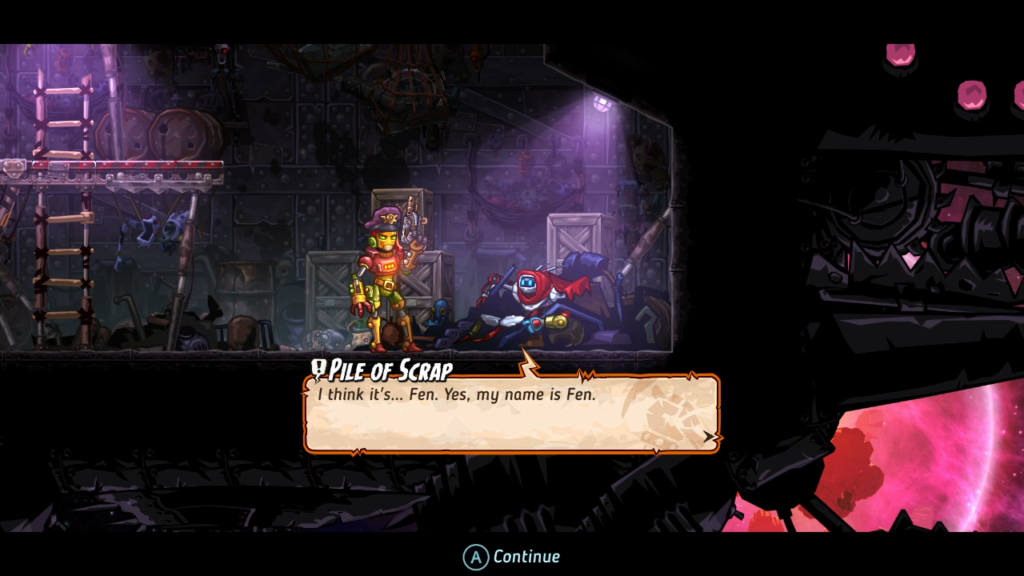
The SteamWorld series is unique in the indie videogame ecosystem because it contains so many disparate genres while telling a continuing story in a consistent setting. They can be played and understood individually, but if I take the time to play them all I see how they are interconnected in interesting and rewarding ways. Heist is especially interesting as even though it was released before SteamWorld Dig 2, it portrays what happens after that entry. One of the recruitable crew members is even a survivor from the events of Dig 2 whose fate was left ambiguous.
As it is the latest game in the series chronologically at the time of this writing, Heist exists in a kind of limbo. It builds on preceding events, some of which had yet to be told when it was first released, but how exactly it fits into the setting going forward remains unclear. This could be the story of a crew of unlikely Steambots ultimately defeating SteamWorld’s greatest enemy. It could also be a minor speed bump in that enemy’s ongoing plan. The ending is inconclusive, which leaves me feeling uneasy about Heist’s place in the overall SteamWorld narrative. Hopefully future series installments will solidify and clarify its place in the ongoing narrative.
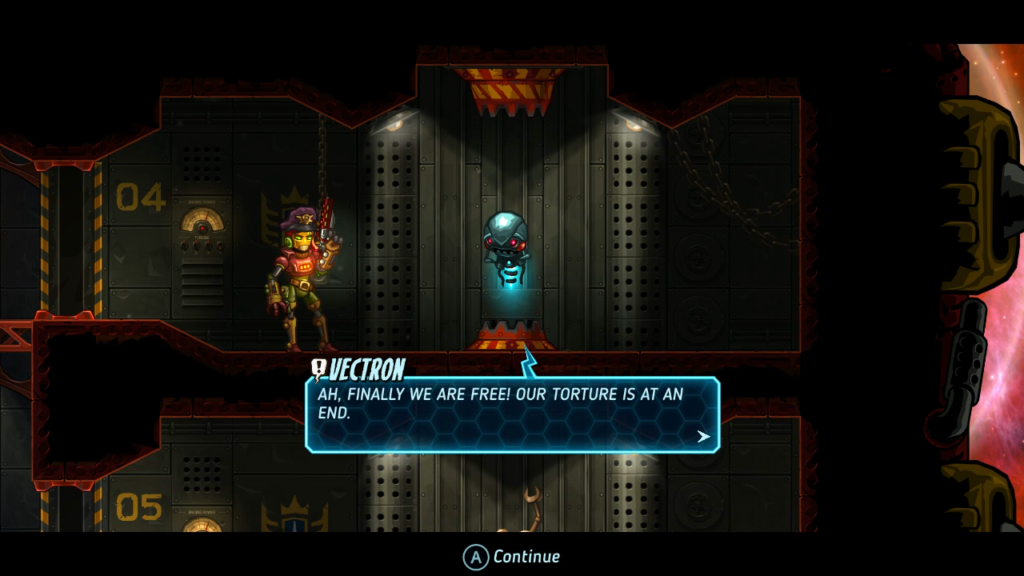
SteamWorld Heist is a smart, tactical videogame and a worthy addition to the series, though there are some factors which weigh it down as SteamWorld’s most inconsistent entry. It sometimes suffers from unexpected difficulty spikes caused by random factors. Abundant loot and short mission times make it easy to bounce back from these frustrating setbacks. It more broadly struggles due to an overarching feel of sameness; despite the variety of goals across missions, the same strategies work in all of them, at least on the default difficulty. I’m simply never given a reason to use more than three or four of the ten recruitable crew members. It’s a fun series capstone for SteamWorld fans, and strategy fans may enjoy the skill-based gunplay, but I don’t recommend it as an entry point to series newcomers.